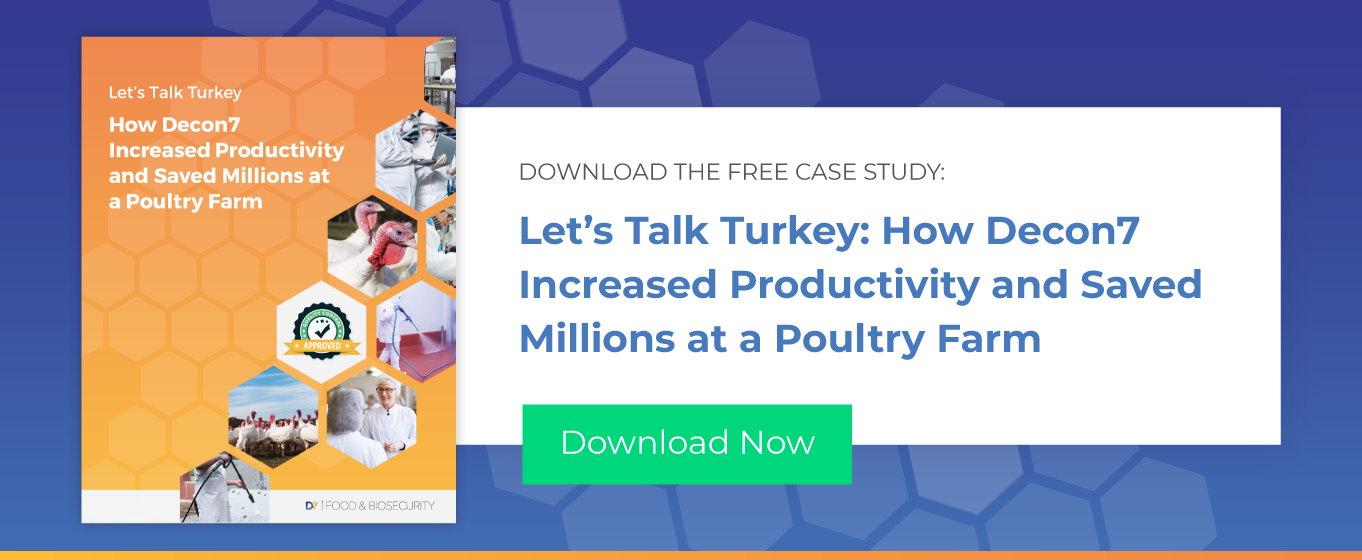When bacteria finds an environment where it likes to grow, it can be difficult to stop it from multiplying. This can lead to facility contamination that could cause a costly product recall or health risks for consumers. Bringing bacteria down to safe levels through daily sanitizing helps reduce the risk of an outbreak by limiting their ability to multiply and thrive.
Understanding what contributes to bacterial growth and how it can be avoided is critical for food safety, and for protecting your brand.
What Makes Bacteria Rapidly Multiply?
The same things that make other organisms grow and thrive are exactly what bacteria need: food, water, and shelter. By controlling these factors, food safety professionals can reduce bacteria growth. When it’s not possible to eliminate the conditions that cause bacteria to grow, having an awareness of them is an important element in preventing an outbreak.
Temperatures
Different types of bacteria prefer to grow in various temperature ranges, so it’s virtually impossible to eliminate bacteria through temperature regulation. Although some bacteria prefer warmer temperatures, some (like Listeria) can thrive in a freezer.
Environments
Bacteria get water from their surrounding environment. For most of the common types of foodborne pathogens, a moist environment can contribute to their growth because it serves as a water supply. They can get water from the air, the surfaces they are adhered to, and food products. This makes it difficult to prevent bacterial growth through controlling the environment, which is why it is so important to continually bring them down to safe levels.
Other Bacteria
When bacteria are allowed to grow on a surface, they can form a biofilm. Layers of bacteria combine with proteins and other substances to create a protective shell under which pathogen colonies can thrive.
The Risk of Biofilms
Biofilms provide extra protection for the bacteria within them, making them even more difficult to remove. When a biofilm in a food processing facility is disrupted, it can contaminate the products being produced. Removing biofilms is challenging because with most chemical solutions, mechanical action is required to disrupt the outer layers to reach the pathogen within. Biofilms are also invisible, so it’s impossible to know exactly where to target the mechanical action. This adds up to a lot of manpower because every surface has to be scrubbed.
Common Mistakes That Accelerate Bacterial Growth
Knowing what mistakes to avoid can help you protect your facility from bacterial contamination.
Ignoring the Invisible
The areas that are not easily seen—drains, between and behind equipment, inside pipes, etc.—are perfect environments for bacteria to grow. Be sure to treat these areas during your sanitation processes.
Using the Same Chemicals
Bacteria can build resistance, especially when the same sanitizing chemicals are used over and over. Chemicals should be rotated to help prevent this common problem.
Applying Chemicals at the Wrong Concentration
When sanitizing chemicals are improperly diluted, it can lead to chemical resistance and an incomplete kill. Make sure sanitizing crews understand the dilution rates for each type of chemical being applied.
Not Following Minimum Contact Times
Sanitizing chemicals must stay on surfaces for a certain amount of time to be effective. Rinsing too soon can cause an incomplete kill. Additionally, when liquids are applied, they might not stay on overhead and vertical surfaces for long enough. Using a foam that adheres to surfaces can help ensure that minimum contact times are achieved.
Incomplete Application
Sanitizers should be applied to all surfaces. When an area is missed, it’s an opportunity for bacteria to grow. This is another good reason to use foam because it is clearly visible where it has and has not been applied.
Choose Decon7 as Your Sanitation Partner
Decon7 has commercialized an innovative chemical solution that kills the most common foodborne bacteria. D7 is different because it kills bacteria at the DNA level. This means that it doesn’t build up a resistance to the sanitizer. D7 also treats biofilms without the need for mechanical action, saving time and resources. When applied as a foam, D7 is clearly visible so workers know which areas have been treated and which have not. The foam also adheres to surfaces (especially walls and ceilings) longer than a liquid application.
To learn more about how D7 can help you kill bacteria while also saving time and money, read our case study, How Decon7 Increased Productivity and Saved Millions at a Poultry Farm.


